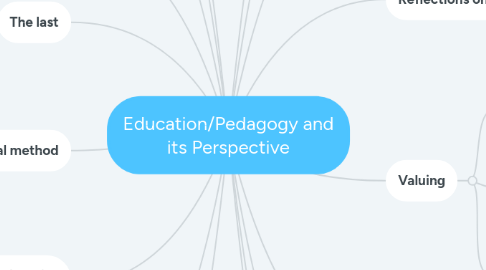
1. States that
1.1. The functionalist approach to the positive functions of education
1.1.1. The creation of social solidarity
1.1.2. Teaching core values
1.1.3. job skills
1.1.4. and the assignment of roles / meritocracy
2. positive functions that education performs:
2.1. Create social solidarity
2.1.1. Teaching skills needed for the job
2.1.2. Teach people core values
2.1.3. and role assignment and meritocracy.
3. First
3.1. It's based on
3.1.1. Emile durkheim
3.1.1.1. The school is a miniature society
3.1.1.1.1. For example
4. Second
4.1. is based on The School
4.1.1. The School
4.1.1.1. people learn the various skills necessary to make this happen
4.1.1.2. A student learns general subjects
4.1.1.3. another level of education
4.1.1.4. learn advanced subjects
4.1.1.5. and specialized for professional life.
5. Third
5.1. Talcott Parsons
5.1.1. The education
5.1.1.1. acts as the "focal socializing agency in modern society"
5.1.1.2. A school is a micro-sociality
5.1.1.2.1. that helps people to socialize
6. The last
6.1. Education
6.1.1. assign people
6.1.1.1. to the most suitable job
6.1.1.2. or their talents through exams and califications.
7. Contemporary theoretical perspectives on education
7.1. Lumen Website, states
7.1.1. Education
7.1.1.1. Plays an integral role in individuals´ lives
7.1.2. Functionalist believe that
7.1.2.1. Education equips people to perform different functional roles in society
7.1.2.1.1. Since Education is the compass
7.1.2.1.2. that guides people´s daily activities
7.1.2.1.3. performance inside the community where they belong.
8. Perspectives on pedagogy
8.1. Pedagogy
8.1.1. Uses different techniques
8.1.1.1. To help students learn something is positive
8.1.1.1.1. Since
9. Reflections on pedagogy
9.1. The United Nations Conventions on the Rights of the Child
9.2. The Melbourne Declaration on Educational Goals for Young Australians
9.2.1. All affirm the rights of the child
9.2.1.1. and the need for quality early childhood education.
9.3. The National Quality Framework
9.4. and Belonging, Being & Becoming
10. Valuing
10.1. Children’s rights necessities
10.2. High quality pedagogy
10.2.1. We as teachers
10.2.1.1. Should think about the privileges that any child has
10.2.1.1.1. While being a student since he / she needs to be taught
10.2.1.1.2. Based on high-quality educational standards
10.2.1.1.3. That may ensure the delivery of a good education.
10.3. Based on respect for children and their abilities.
11. Roles and functions of teachers in teaching
11.1. Incorporates a multifaceted sense of purpose
11.2. Intended to encourage child´s social development.
11.3. The age and grade level of the students
11.4. Instructors have different roles
11.4.1. to carry out while in the classroom
12. Roles and functions of students in learning
12.1. Students
12.1.1. Have different roles to accomplish while learning.
12.1.2. In the Communicative Approach
12.1.3. They become active elements in class
13. Scientific Approach,
13.1. Pupils imitate what they hear
13.1.1. Memorize short and basic sentences
13.1.2. Dialogues in the second language
13.1.3. They study the culture
13.1.4. And literature works of the other language.
14. In the Direct Method
14.1. Students are also passive elements
14.2. and repeat whatever the teacher says.
15. In the Audio-Lingual method
15.1. Scholars repeat, mimic and memorize
15.2. What the teacher says in class
15.3. Purpose of acquiring good habits
15.4. Permit them to communicate correctly
15.5. By using the target language without thinking.
16. Relationships of the didactics with the learning processes
16.1. Kansanen & Meri Teacher´s didactics.
16.1.1. It is about the instructor´s own way of teaching.
16.1.2. Determination of teaching-Learning strategies
17. According to Ferenci and Fodor (1996)
17.1. There are some stages of problem-solving teaching-learning strategy:
17.1.1. The creation of a problematic situation
17.1.2. The analysis and synthesis of the problem
17.1.3. The construction of the problem-solving plan
17.1.4. The execution of the corrections
17.1.5. The synthesis of the information obtained
17.1.6. The answering of the key problem question
17.1.7. The outlining of the new problem
18. The constructivism learning theory paradigm
18.1. According to Nahalka (1997)
18.1.1. “The learner does not simply incorporate new knowledge”
18.1.1.1. She/he rather constructs it
18.1.2. The strategies to teach and learn
18.1.2.1. They are some kinds of means
18.1.2.2. Help an instructor teach correctly something
18.1.2.3. Help students learn effectively
